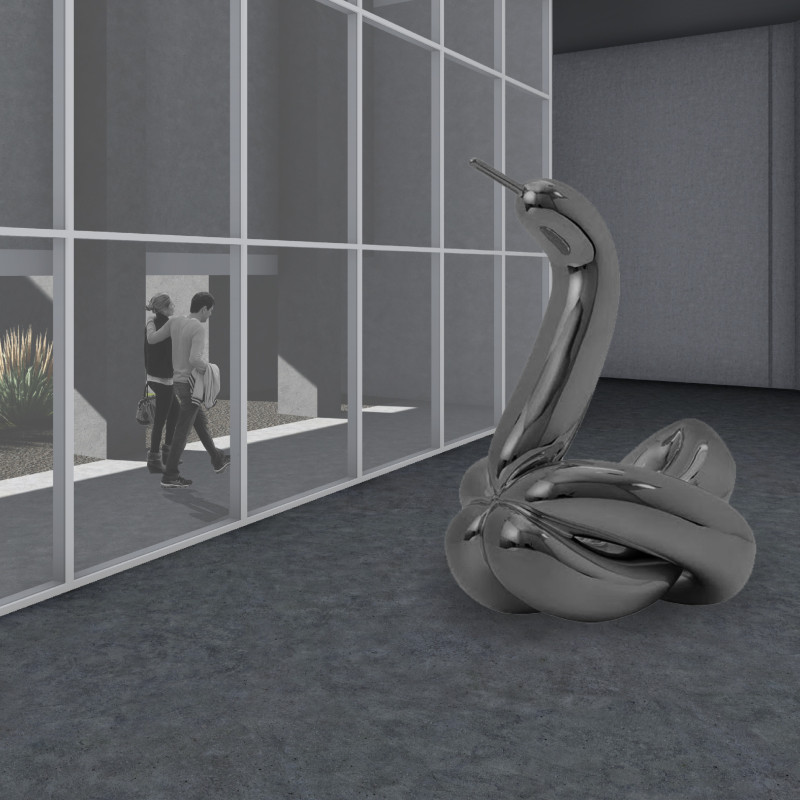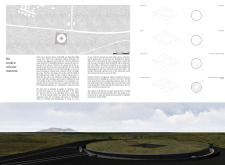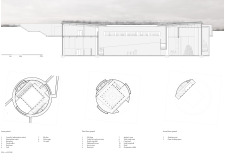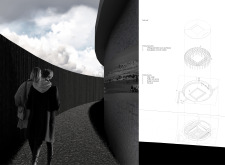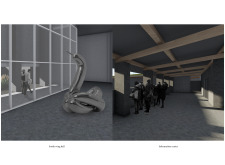5 key facts about this project
The museum's primary structural concept is a circular plan, which mirrors the shapes of craters and hills found in the vicinity. This circular form is not only aesthetic but also functional, ensuring a smooth flow of visitors throughout the space. The decision to create a sunken structure minimizes the visual impact on the landscape while enhancing the integration of the building with its environment.
The architectural design employs a material palette that includes concrete for structural integrity, wood for warmth in interior spaces, and extensive glass elements that facilitate natural light. The use of a turf roof fosters biodiversity and aligns with sustainable design practices, allowing the structure to blend seamlessly into its backdrop.
Innovative Design Elements
The incorporation of a partially submerged design distinguishes the Sunken Volcano Museum from conventional museums. This feature allows for natural landscapes to rise alongside the building, creating a harmonious relationship between architecture and nature. The internal layout facilitates visitor interaction, with designated exhibition areas, meeting rooms, and open spaces designed for educational purposes. The flow of circulation is carefully crafted with ramps and staircases, ensuring accessibility throughout the building.
The museum's dynamic use of light, achieved through large glass openings, enhances the visitor experience by establishing a visual connection to the external environment. Additionally, art installations integrated into the design encourage engagement with the thematic elements of volcanic history, reinforcing the educational intent of the museum.
Spatial Organization and Experience
The layout of the Sunken Volcano Museum is organized across multiple levels, each serving specific functions that contribute to the overall mission of the facility. The lower ground level features an information center and reception area, providing a starting point for visitor engagement. The second lower ground includes collaboration spaces that cater to educational initiatives, fostering community involvement.
The exhibition areas on the third lower ground showcase multimedia displays and permanent exhibits on volcanic activity and regional geology. This thoughtful spatial organization creates an organized yet exploratory experience for visitors, allowing for a comprehensive understanding of the geological features that define the area.
The Sunken Volcano Museum represents a refined approach to architectural design, where functionality blends with natural aesthetics. The project effectively embodies the spirit of its location, providing a valuable resource for education and community engagement. For a deeper understanding of the architectural concepts, visitors are encouraged to explore the architectural plans, sections, and designs that make this project unique.


